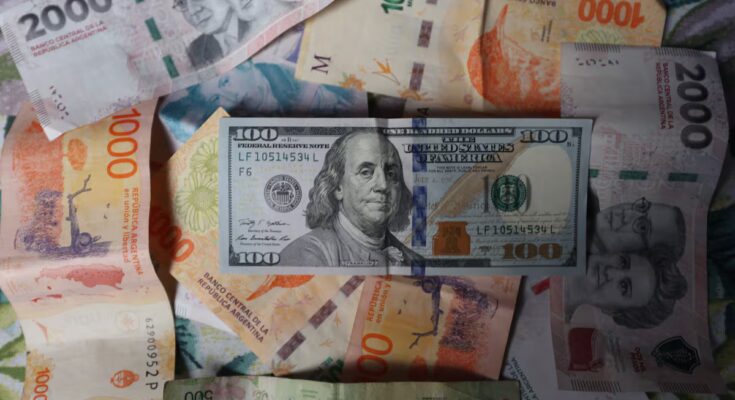Dollar lending is the “original sin” of emerging markets, economists Barry Eichengreen and Ricardo Hausmann argued in 1999. While many developing economies have worked to expand local currency debt markets, Argentina has sabotaged its own. For President Javier Milei and other countries that remain tied to hard currencies, it is a lesson in what not to do in the future.
Despite the rebound after the mid-term elections, the Argentine currency has weakened again and remains close to the lower band of 1,500 pesos per dollar established by the Government. An underappreciated problem for Milei is that the peso market is too small to avoid leaks.
As of September, Argentina had a public debt of around $450 billion. Of this amount, only 44% was denominated in the local currency. That compares with 91% of Latin American countries as a whole and 94% of emerging countries overall, according to 2022 data from the Bank for International Settlements. Many countries affected by the Asian crisis of the late 1990s took advantage of the popularity of emerging markets after 2000 to strengthen their monetary sovereignty. Argentina did the opposite.
Left-wing presidents Néstor Kirchner and Cristina Fernández undermined foreign investor confidence by imposing cuts on bondholders and nationalizing large companies. But supposedly business-friendly rulers have been even worse. Mauricio Macri, president from 2015 to 2019, not only presided over the huge increase in dollar debt that brought Argentina to its current situation, but also torpedoed the local currency market by unilaterally postponing payments on short-term peso debt at a time when international investors had piled in. Since then, the country’s Treasury bonds carry risk.
Undeterred, Milei attempted to pressure more banks to hold those notes, halting the central bank’s issuance of short-term instruments, called Leliqs, in an effort to curb what he saw as excessive growth in the money supply. The result was a sharp fluctuation in interest rates and a further depletion of Argentina’s foreign exchange reserves. As economist Pablo Bortz states, “the causality between a strong local market and reserve accumulation works both ways.” Peru offers a counterexample: Higher reserves have given comfort to investors, allowing the local market to expand and thus also the inflow of more dollars.
By moving away from dependence on hard currencies, other emerging markets have become more resilient. However, the BIS, as well as Eichengreen and Hausmann, have warned in recent research about the growing gap between larger and smaller economies that have failed to develop local currency markets. Even when they succeed, the risks do not disappear, as the involvement of foreign investors makes exchange rates more volatile in times of stress. However, the lesson for Milei is clear: while it helps reach international dollar lenders, providing security to local investors is ultimately more valuable.



